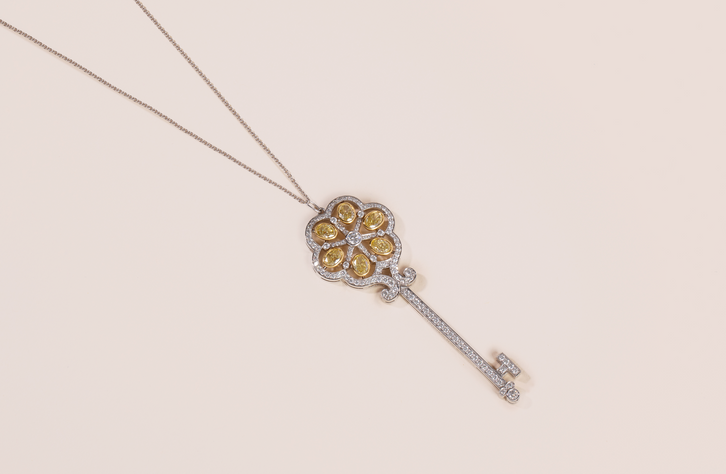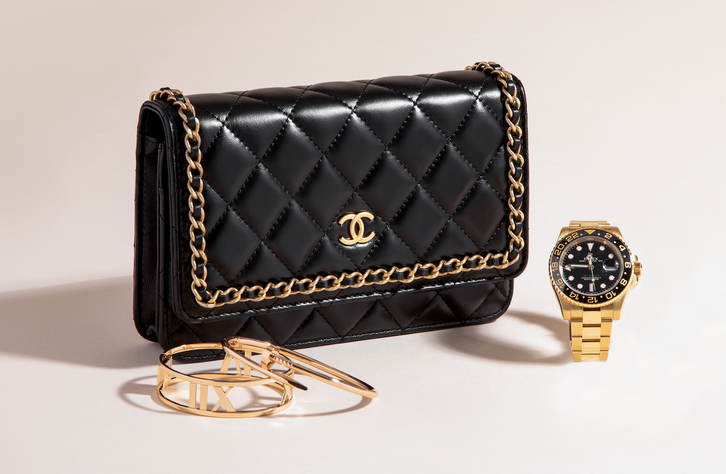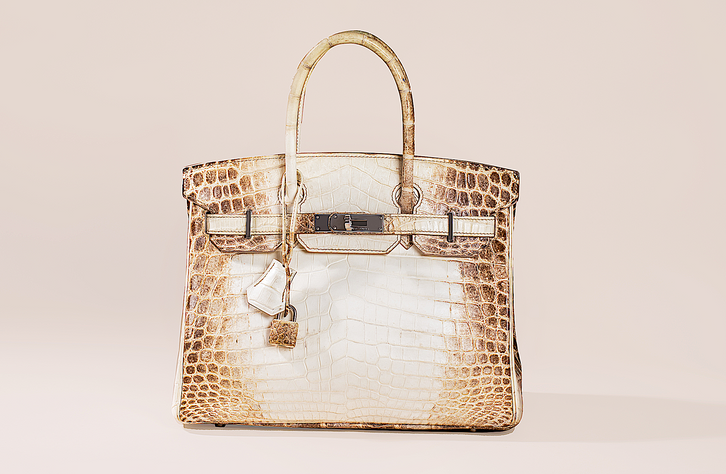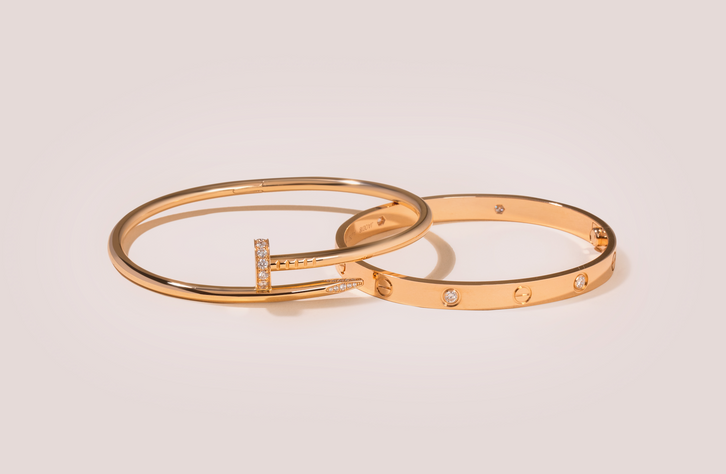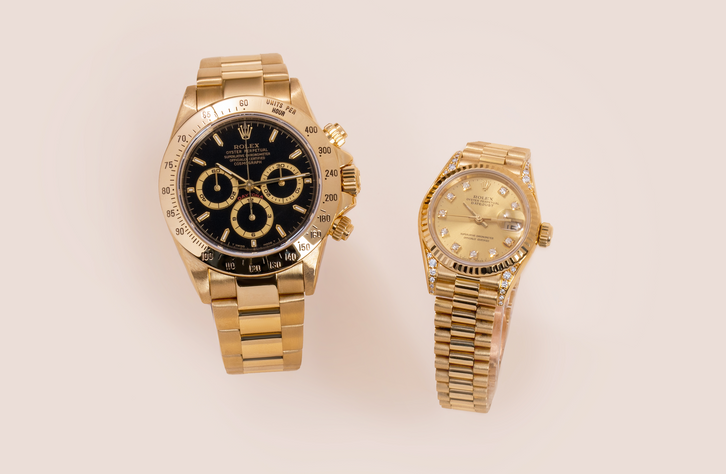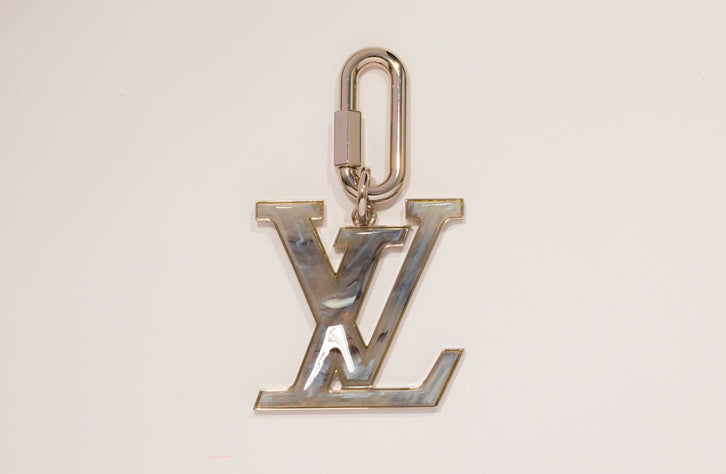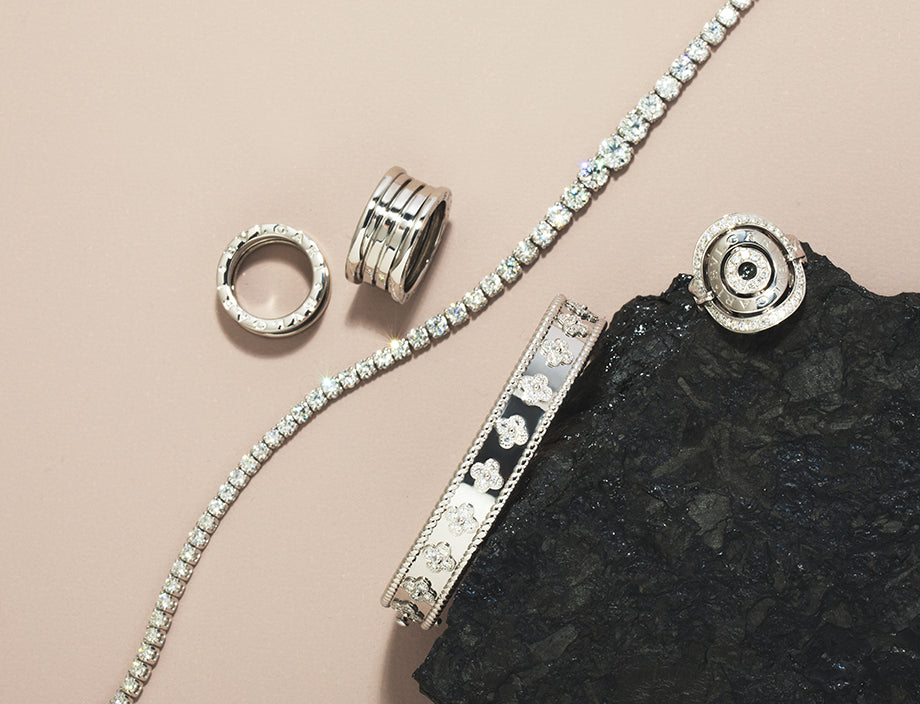As more people are making the choice to shop sustainably, synthetic diamond sellers promote their gemstones as the eco-friendly diamond alternative. But just how valid is this claim? The reality is that synthetic diamonds, also known as lab grown or man-made diamonds, are not the most eco-friendly diamonds available.
What Is A ‘Synthetic’ Or 'Man-Made' Diamond?
With diamond, some materials are used that have the look of diamond, some are imitations or simulants, some materials are composite, and then, ultimately, synthetics were created.
In gemology, we use the word synthetic quite strictly. To be a synthetic, an artificial (i.e. lab created, man-made) gemstone must have a natural mineral counterpart of the same composition and structure.
For synthetic diamond, this means that a manufactured synthetic diamond has the same chemistry, physical properties and structure of a natural diamond. In essence, it is a diamond in every way, with the only difference being that it is man-made, as opposed to being brought out of the earth.
Though chemically and physically identical to mined diamonds, they can be created in as little time as a few weeks.
The History Of Synthetic Diamonds
James B. Hannay (1879) and Henri Moissan (1893) attempted to convert charcoal into carbon, after the discovery that diamond was made of pure carbon. Hanay used a flame-heated tube, while Moissan used his electric arc furnace.
Sir Charles Parsons spent forty years methodically trying to reproduce their experiments to create diamond, and in 1928 authorized Dr. C. H. Desch to publish and article stating that, to date, no synthetic diamonds had been produced by anyone, and that previous experiments had likely created another gemstone.
Allmänna Svenska Elektriska Aktiebolaget (ASEA) was the first company to succeed in growing diamonds in their ‘sphere’ apparatus in 1953, but they did not announce their discovery at the time.
Two years later, General Electric publicly declared that they had grown the first diamonds using the ‘belt’ apparatus, a process guarded by the US government. De Beers announced their success in growing diamonds in 1959 using a similar method, and by the 1960’s synthetic diamond was being created by both GE and De Beers for industrial purposes.
How Are Synthetic Diamonds Made?
Most synthetic diamonds are created using either High Pressure High Temperature (HPHT) or Chemical Vapor Deposition (CVD) methods. In HPHT, a carbon source (usually graphite or diamond powder) is dissolved by metallic catalyst solvent, upon a diamond seed crystal, which will grow under conditions of extreme high pressure and high temperature.
Pressure can be applied by anvils in the Belt Process or Cubic Press, by liquid in a compression barrel through the BARS process, or through a pyrophyllite gasket and electrical currents using a Toroid press. In CVD synthetic diamond making, temperatures and pressures do not have to be so high, and instead a mix of oxygen, hydrogen and methane (which has carbon) can allow for recrystallization on the seed crystal.
Why Synthetic Diamonds Are Not Eco-Friendly
There are three major disadvantages of synthetic diamonds:
1. Massive energy consumption:
While conflict free, there are still environmental impacts. The energy required to provide enough heat and pressure to create a diamond in a lab is not insignificant.
Synthetic diamond factories operate all day and require large amounts of constant energy. They require huge energy as they are attempting to recreate the massive heat and pressure that occurs in the Earth to naturally create diamonds.
According to Jason Payne, founder of ADA Diamonds, the “most efficient” diamond growers use 250 kWh of energy per carat which is the equivalent of the amount of energy the average US household uses in 8.7 days. Payne continued to explain that “less efficient” growers use about 750 kWh per carat, in comparison to the Argyle mine which uses 7 kWh to produce 1 carat and De Beers which uses 80.3 kWh per carat.
According to a 2019 Trucost report commissioned by the Diamond Producers Association, on average, the production of lab-grown diamonds generates three times as many carbon emissions than mining for earth-grown diamonds. Though the report may not accurately depict the environmental costs associated with both lab-grown and mined diamond production (as the sample data covers earth mining from only 52% of global diamond production), there is no doubt that a significant amount of energy is used in each of these processes.
Comparison of Energy Use: Natural Diamonds vs Synthetic
- Synthetic Diamonds: 250 kWh - 750 kWh
- Argyle Mine: 7kWh
- De Beers: 80.3 kWh
2. Lack of transparency: JCK news director Rob Bates explained that there is almost no independent research on the eco-friendliness of lab grown diamonds. Furthermore, many manufactures are not as transparent as they should be about how waste and other by-products of lab grown diamonds are treated and disposed of.
In 2019, the Federal Trade Commission also warned against deceptive marketing of lab-grown diamonds as “eco-friendly” or “sustainable,” stating that diamond companies should avoid those claims unless they are able to provide evidence.
3. Job displacement: Environmental planner and energy professor, Dr. Saleem Ali, said “Synthetics are not going to generate a lot of jobs. When the diamond mining industry is well-governed, it has the potential to benefit people greatly in very poor areas.” Today, millions of people depend on diamond mining to support themselves and their families.
Modern diamond mines operate under strict environmental protocols from local governments. For instance, members of the Diamond Producers Association, who account for 75% of the world’s diamond production, work to further the economic, social and institution development of their communities.
Why Natural Diamonds Are Not Eco-Friendly
Unfortunately, natural diamonds are not an eco-friendly option. Every year, 150 million carats of diamonds are mined, extracting over 260 billion tons of earth. Mining in large quantities damages ecosystems, contaminates the soil, water and air.
Most diamond mining occurs in countries such as Angola, Australia, Botswana, Canada, DRC, Russia, South Africa and Sierra Leone. The mining process is extremely disruptive to the environment, resulting in the usage of precious natural resources, harming ecosystems and contributing to greenhouse gas emissions.
Mining one carat of diamonds causes:
- 3.10 tons of earth displacement
- 0.056 C02e tons of greenhouse gas emissions
- 8.9 liters of fuel use
- 2,534.87 liters of water use
While members of the Diamond Producers Association work to manage the environmental impact of their mining, there are still poorly managed mines whose mining practices can result in:
- Soil Erosion: Which strips nutrients from the soil, leading to agricultural problems.
- Land Disturbance: There are over 150 million carats of diamonds extracted from the Earth each year, causing large amounts of soil to be displaced for processing. Approximately 1,750 tons of soil has to be extracted to find a 1.0 carat rough diamond.
- Energy Use And Emissions: Diamond mining uses electricity and hydrocarbons, such as diesel, marine gas, oil and petrol. A by-product of both electricity and hydrocarbon energy is the release of carbon emissions (CO2), which is a major contributor to global warming and climate change.
- Polluted Waters: Which kill the fish and plants that live in it, thereby removing a food and water source for the local wildlife.
- Airborne Dust Pollution: Which is comprised of disease-causing toxic chemicals.
- Depletion Of Water: Water is necessary for mining, which depletes an already shrinking natural resource. A mined diamond also requires approximately 126 gallons of fresh water per carat, and as a result a discharge of wastewater and pollutants have been found in surface water bodies.
- Diseases: Mining pits which become filled with stagnant water and become a hub for diseased mosquitoes.
- Waste: Diamond mine waste can include oil, paper, scrap metal, batteries, plastic and glass.
- Loss Of Biodiversity: When areas of land are cleared for a diamond mine, the surrounding ecosystem suffers as the native plants and animals are displaced. The destruction of habitat can potentially lead to the extinction of species who survive off of the disrupted land.
Some argue that the social impacts of mining are positive, providing the local community with employment opportunities. However, others argue that diamond mining has negative social impacts including poor working conditions.
Environmental Impact Of Recycled Diamonds
When it comes to selecting an environmentally responsible diamond, recycled diamonds cause far less damage than earth-mined or lab-grown diamonds. In fact they have nearly zero environmental impact.
A diamond is one of the most durable substances on earth, and a single stone can be placed repeatedly in different settings over its lifetime, and show virtually no wear. By choosing a repurposed diamond, consumers reduce the demand for mining new diamonds.
How To Shop For Environmentally Friendly Diamond Jewelry?
Andrew Brown, CEO of myGemma, says, “We fundamentally believe that there is a better and more eco-friendly way to shop luxury goods, including diamonds; and that is to shop pre-owned. Not only does this translate to better prices for our customers, but recycled diamonds contribute none of environmental damage caused by mining or even lab grown diamonds. Our goal is to bring quality, beautiful, recycled diamonds to our customers that they can feel good about.”
Shop pre-owned and expertly authenticated, eco-friendly diamond jewelry at myGemma. At up to 80% off retail prices, recycled diamond jewelry is not only sustainable but cost efficient.
How To Buy Eco-Friendly Diamonds?
The most eco-friendly way to buy diamonds is to shop pre-owned. By shopping for pre-owned diamonds and diamond jewelry, you give new life to existing diamonds without increasing your carbon footprint.
Your recycled, sustainable purchase reduces the need for harmful diamond mining or energy consuming man made diamond production. What's more, diamonds are thousands of years old, so whether freshly mined or mined 20 years ago, they will look the same.
At myGemma we believe in making beautiful, sustainable diamonds and diamond jewelry affordable for everyone. Enjoy shopping for loose diamonds or diamond jewelry from your favorite brands such as Harry Winston, Chopard, Tiffany and Graff at up to 80% off retail.
All of our diamonds and jewelry are assessed by our team of expert gemologists for exceptional quality and authenticity. Your money always goes further at myGemma, with easy monthly payment plans with our partner Affirm and free US shipping.
